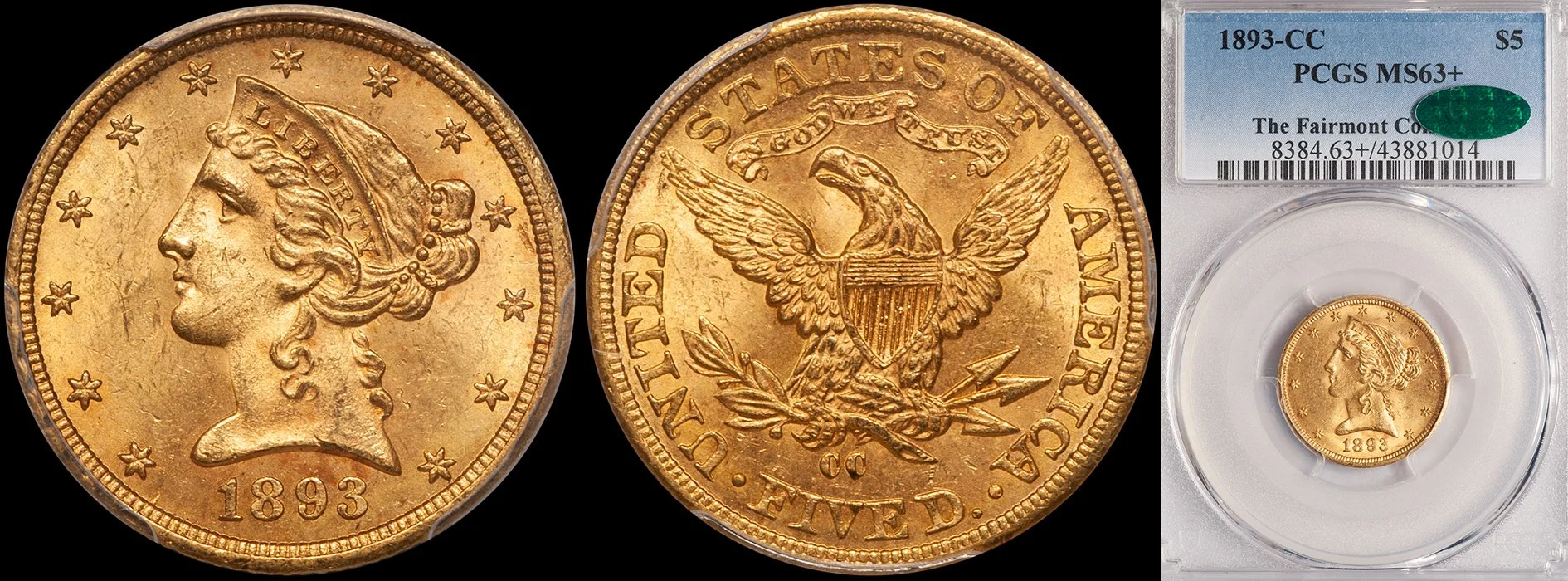The Availability of Rare Coins
/One thing that I’ve always found interesting about the coin market is the ebb and flow of coins that are (or aren’t) available. If you actively buy and sell coins for any period of time, you learn that certain “rare” issues or series always seem available. Other supposedly available coins can, with no good reason, go through fallow periods where they become very hard to find. I was having a conversation with a client yesterday and he raised a good point: in the last year or so, it seems that interesting New Orleans half eagles have not been offered for sale with much frequency. As we began discussing this statement, my mind raced back through the last year and I asked myself what were some of the interesting New Orleans half eagles that I have recently handled. The answer was pretty illuminating...
Over the years, I think I’ve owned more interesting New Orleans half eagles than just about anyone. I was one of the first dealers to recognize how rare these coins are and I’ve tried to make a market in high quality New Orleans half eagles for close to two decades.
As recently as a few years ago, I was handling ultra-cool New Orleans half eagles on a regular basis. Coins like the Pittman MS63 1840-O, two of the three known Uncirculated 1842-O, two extremely high grade 1843-O Small Letters, the MS63 Bass 1845-O, two nice Uncirculated 1851-O, the two finest known 1854-O, etc. Often, I had two or three Finest Known or Condition Census coins at one time.
But since last summer I’ve noted a major slow down in the New Orleans half eagles I’ve handled. I don’t think I’ve owned a single 1842-O or 1847-O this year and the only Uncirculated pieces of note that I’ve handled have been the more available dates like the 1840-O, 1844-O, 1845-O, 1846-O and 1854-O. So where are the coins?
My guess is that what we are seeing here a classic case of a Real Collector’s Market. Let me explain. My enthusiasm for New Orleans half eagles has probably rubbed-off on a few people and my guess is, at this point in time, there are at least six to ten serious collectors of New Orleans half eagles. Assuming this is the case, this has removed most of the nicer New Orleans half eagles from the market. Let’s quickly do the math.
Say we’re looking at a coin like the 1851-O half eagle in Uncirculated. My best estimate is that a half dozen or so are known in Uncirculated. With at least six to nine collectors out there for this series in high grades, that means that the demand clearly exceeds the supply. Given the fact that most of the serious collectors for this series seem to be in buy mode right now as opposed to sell mode, this means that the supply has dried-up for a coin like an Uncirculated 1851-O half eagle. A high grade example won’t come on the market unless a current owner is forced to sell, a new coin is discovered or prices rise to the point that current owners are motivated to sell.
But the ebb and flow of coin supply isn’t always so cut and dry. Look at something like Large Cents. Years went by with no major collections selling and now, within the last two years, you have the Husak, Naftzger and Holmes collections becoming available. I don’t think any serious Cent collectors expected so many great coins to come on the market in such a short time. It was, instead, a series of circumstances that occurred in an almost random fashion.
Back to New Orleans half eagles. When will the dearth of choice, interesting coins end? It’s hard to say. This article could spur a few coins coming onto the market (and if you are planning to sell any, please call me first!). Or, we could go another year or two before any interesting coins come on the market. It’s hard to say and I think this degree of uncertainty is one of the things that make a truly rare segment of the market like this much more interesting than Morgan Dollars or Buffalo Nickels.












